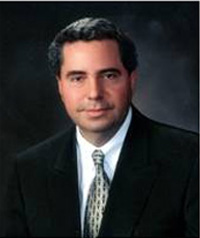Charles Antzelevitch, PhD, FACC, FAHA, FHRS

Dr. Antzelevitch is the Executive Director and Director of Research of the Masonic Medical Research Laboratory (MMRL), an internationally prominent biomedical research institute. He also holds an academic appointment as Professor of Pharmacology at the Upstate Medical University in Syracuse and an endowed chair in Experimental Cardiology (Gordon K. Moe Scholar) at the MMRL.
Dr. Antzelevitch's career has been highlighted by a number of awards and honors. Recent honors include the Distinguished Scientist Award from the North American Society of Pacing and Electrophysiology (NASPE, 2002), Excellence in Cardiovascular Science Award of the NE Affiliate American Heart Association (2003), the Carl J. Wiggers Award from the American Physiological Society (2007), the Distinguished Service Award of the RAM Medical Research Foundation, and the Distinguished Achievement Medal of the Grand Lodge of Masons of NYS. He was elected a Fellow of the Cardiovascular Section of the American Physiological Society in 1984, the American College of Cardiology in 1996, American Heart Association in 2001 and the Heart Rhythm Society in 2006. From 1996 to 1998 he served as President of the International Cardiac Electrophysiology Society. He currently serves as Secretary/Treasurer of the Society.
His contributions to the scientific literature include 300 original papers and book chapters, over 240 abstracts, and 3 books. His scientific achievements include 1) the discovery and characterization of reflected reentry and phase 2 reentry as mechanisms of extrasystolic activity capable of precipitating life-threatening ventricular tachycardia and fibrillation; 2) demonstration of electrical heterogeneity within ventricular myocardium, which has opened a new door to our understanding of electrophysiology and pharmacology of the heart and mechanisms of arrhythmogenesis; 3) delineation of the cellular and ionic basis for the long QT, Brugada, and short QT syndromes as well as catecholaminergic VT; and design of novel approaches to therapy of these syndromes; and 4) the cellular and ionic basis for the J wave and T wave of the ECG.
Dr. Antzelevitch is a member of and has served as Chairman of a number of committees at the National Institutes of Health, the American Heart Association, Heart Rhythm Society and American College of Cardiology. He serves as Associate Editor of PACE and on the Editorial Board of several leading medical journals.








